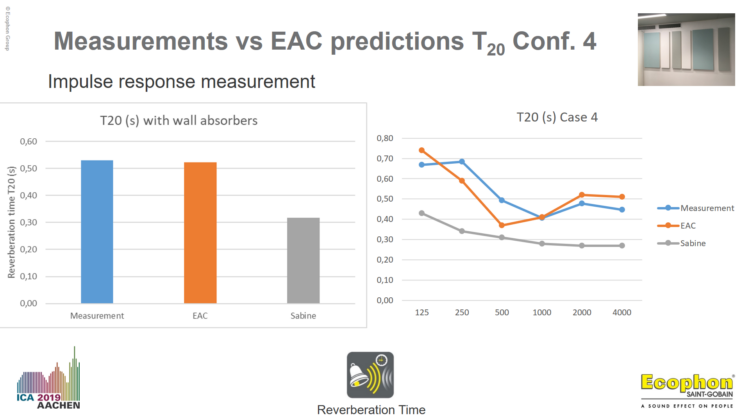
We made acoustic measurements as part of a remodelling of our training area at our head offices during the different phases of the acoustic treatment in the refurbishment. This is outlined in a previous Acoustic Bulletin post which highlighted the need for wall absorbers to remove the flutter echos, thus reducing the reverberation time and improving the speech intelligibility which was measured as C50 – speech clarity.
Is it possible to predict this accurately in a non-diffuse sound field?
Then we made a comparison between the measurement results and our Ecophon acoustic calculator (assuming a non-diffuse room) and sabine calculations (assuming a diffuse room). The Ecophon Acoustic Calculator (EAC) is an SEA (statistical energy analysis) based calculator which takes into account the non-diffuse conditions.
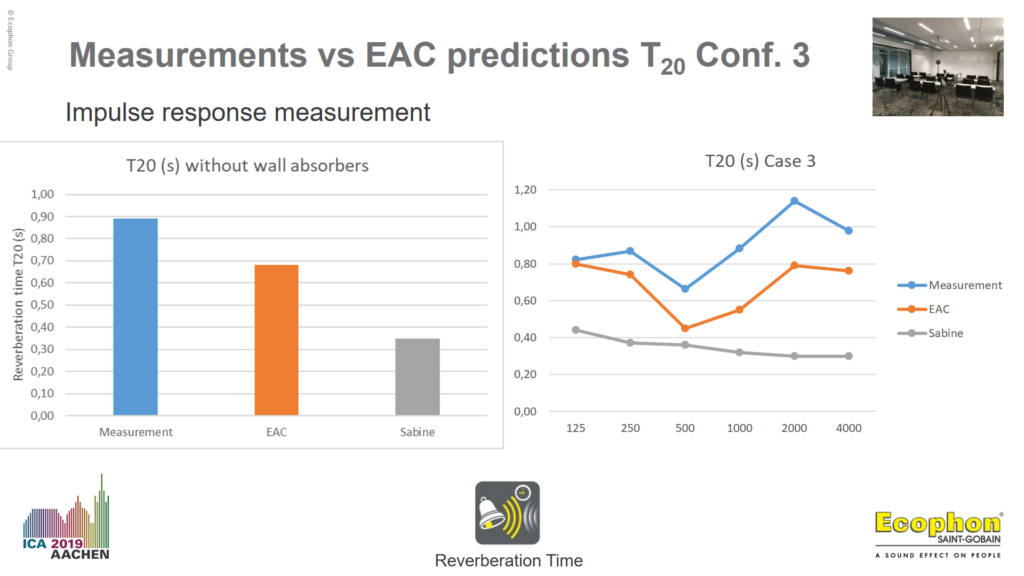
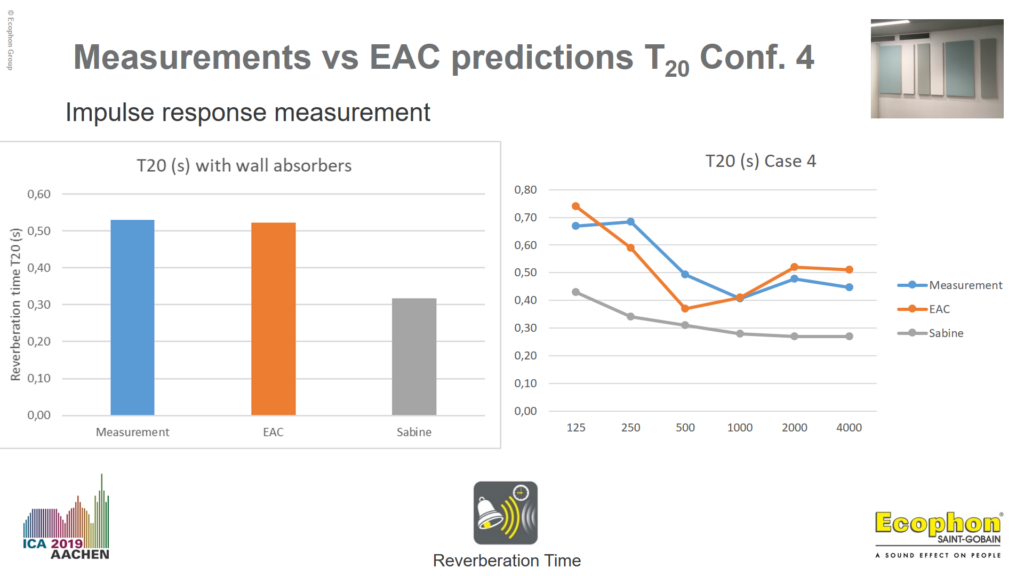
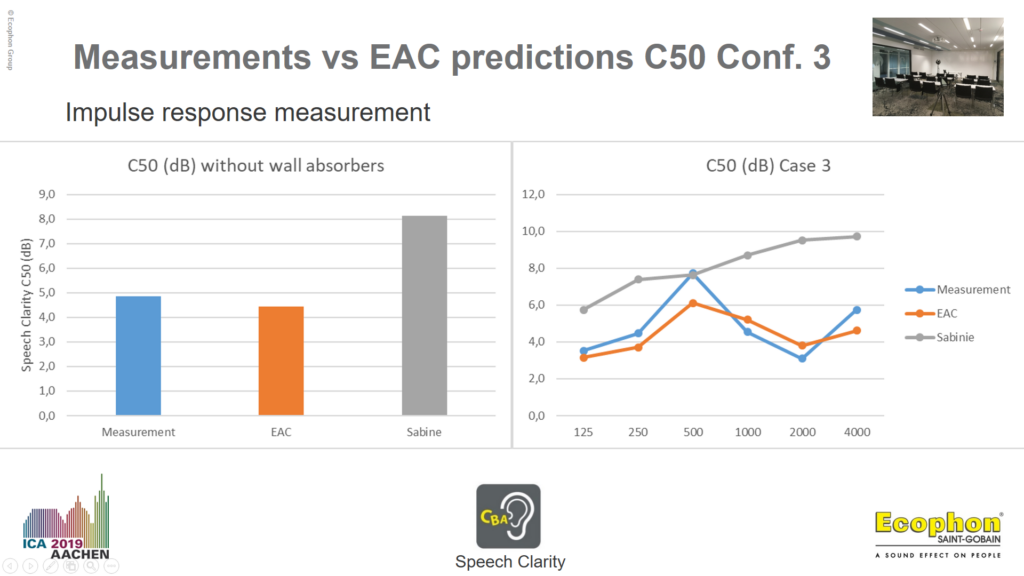
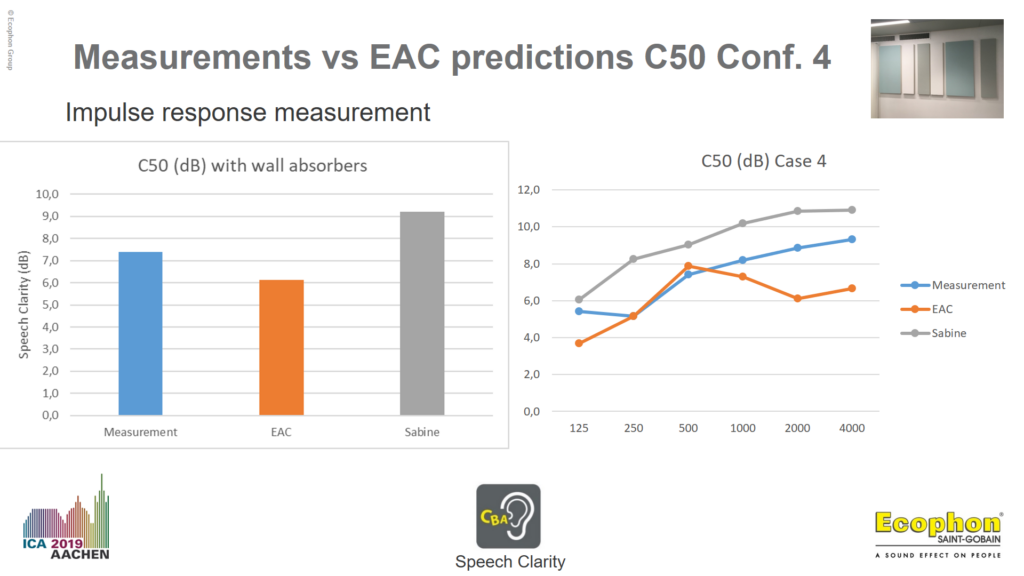
Calculating values for “T20”, Speech Clarity “C50” and Room Gain “G” in non-diffuse rooms with acoustic ceiling treatment is now much more accurate
When Sabine calculations assuming a diffuse soundfield are used they often miss the influence of the late unwanted sound reflections or non-grazing soundfield
As was found in this non-diffuse “Orion” case study looking at reverberation time alone, assuming a diffuse soundfield and making Sabine calculations the influence of the dominant late unwanted sound reflections or non-grazing soundfield would be missed as would the the potential for the flutter echoes.
Below is a summary of the aspects which a Sabine calculation would miss in this type of non-diffuse environment:
- Due to the ceiling and carpet absorption, the lateral grazing waves are much more apparent which is the reason for such pronounced flutter echoes
- At 500Hz we see the scattering effect of the furniture
- At 2000Hz we see an enhanced lateral reflections (flutter echoes) due to the placement of absorption on the ceiling and carpet which is evident in both EAC calculations and in measurements
The Ecophon Acoustic Calculator (EAC) is an SEA (statistical energy analysis) based calculator incorporating sabine to give a comparison assuming both non-diffuse and diffuse room calculators. For more about the calculators acoustic descriptors Speech Clarity/”C50″, Sound Strength/Room Gain/”G” in addition to Reverberation Time/T20 see a previous post here – in a way this calculator is a natural extension of the sabine approach.
More about the measurements made can be read in an earlier Acoustic Bulletin post here.

